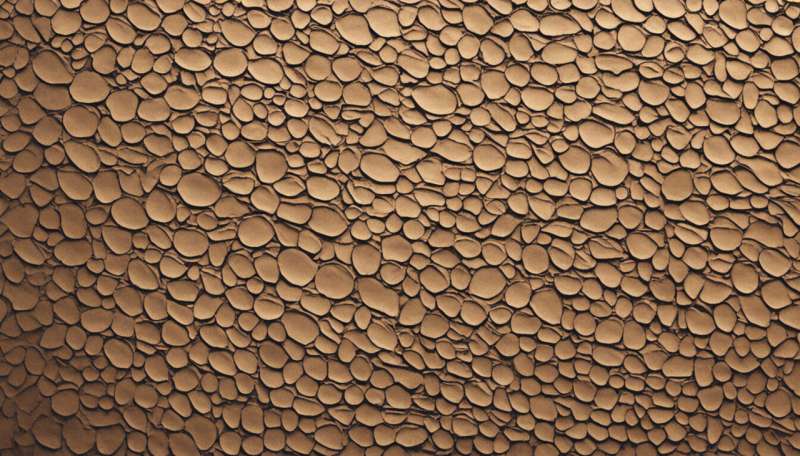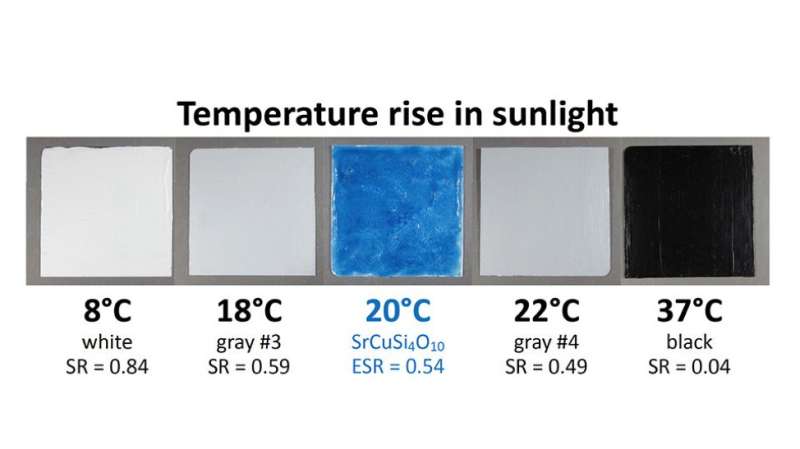Ancient pigment can boost energy efficiency

A color developed by Egyptians thousands of years ago has a modern-day application as well – the pigment can boost energy efficiency by cooling rooftops and walls, and could also enable solar generation of electricity via windows.
Egyptian blue, derived from calcium copper silicate, was routinely used on ancient depictions of gods and royalty. Previous studies have shown that when Egyptian blue absorbs visible light, it then emits light in the near-infrared range. Now a team led by researchers at the Department of Energy's Lawrence Berkeley National Laboratory (Berkeley Lab) has confirmed the pigment's fluorescence can be 10 times stronger than previously thought.
Measuring the temperature of surfaces coated in Egyptian blue and related compounds while they are exposed to sunlight, Berkeley Lab researchers found the fluorescent blues can emit nearly 100 percent as many photons as they absorb. The energy efficiency of the emission process is up to 70 percent (the infrared photons carry less energy than visible photons).
The finding adds to insights about which colors are most effective for cooling rooftops and facades in sunny climates. Though white is the most conventional and effective choice for keeping a building cool by reflecting sunlight and reducing energy use for air conditioning, building owners often require non-white colors for aesthetic reasons. For example, bright-white asphalt shingles are almost never used on sloping residential roofs.

Berkeley Lab researchers have already shown that fluorescent ruby red pigments can be an effective alternative to white; this insight on Egyptian blue adds to the menu of cooling color choices. Further, they found that fluorescent green and black colors can be produced with yellow and orange co-pigments. The new findings were recently published in the Journal of Applied Physics.
In addition to its cooling potential for buildings, Egyptian blue's fluorescence could also be useful in producing solar energy. Used on windows tinted with the blue, photovoltaic cells on the edges can convert the fluoresced near-infrared energy to electricity.
Substantial research over the years from Berkeley Lab's Heat Island Group has found that reflective roofs and walls can cool buildings and cars. This reduces the need for air conditioning and mitigates the urban heat island effect. By reflecting the sun's rays back to space, these cool materials also release less heat into the atmosphere, thus cooling the planet and offsetting the warming effects of substantial amounts of greenhouse gas emissions.
More information: Paul Berdahl et al. High quantum yield of the Egyptian blue family of infrared phosphors (MCuSi4O10, M = Ca, Sr, Ba), Journal of Applied Physics (2018). DOI: 10.1063/1.5019808
Sarah Michaud. Quantum yield of Egyptian-blue IR phosphors calculated using temperature changes in sunlight, Scilight (2018). DOI: 10.1063/1.5040060
Journal information: Journal of Applied Physics
Provided by Lawrence Berkeley National Laboratory



















